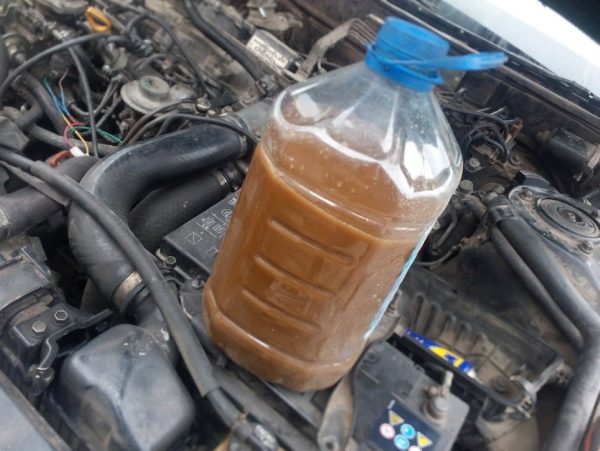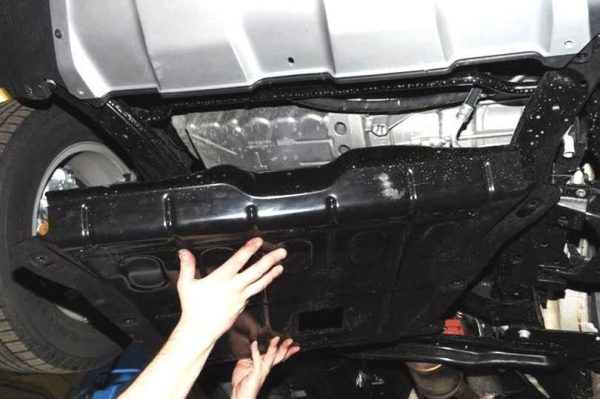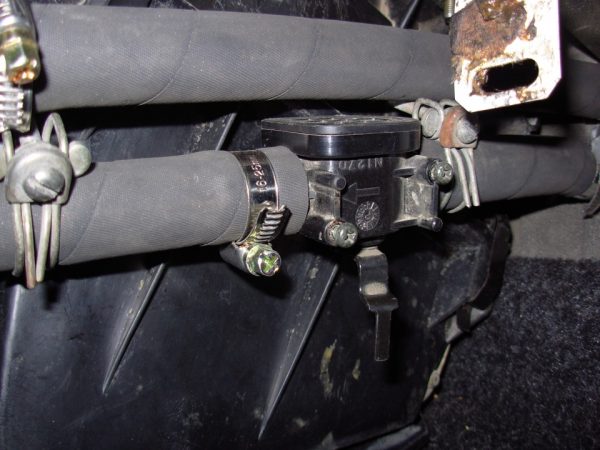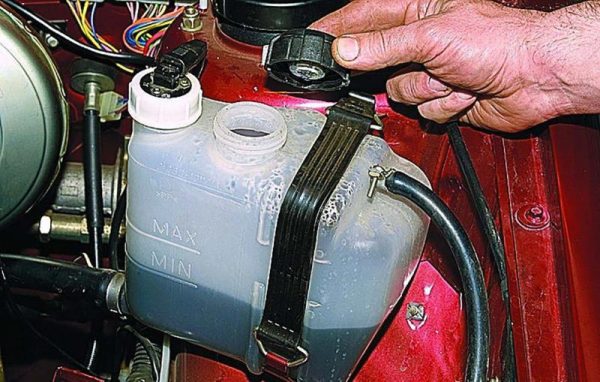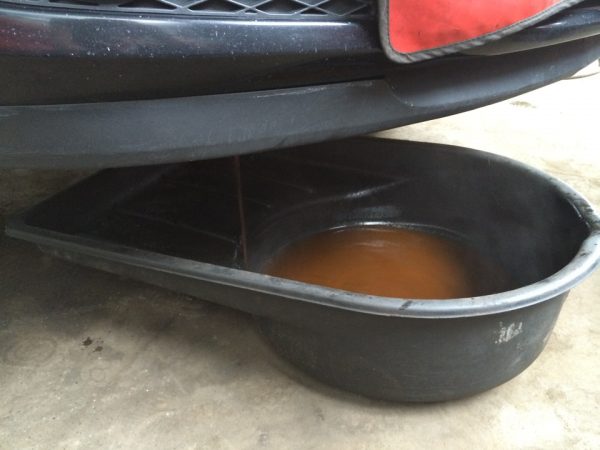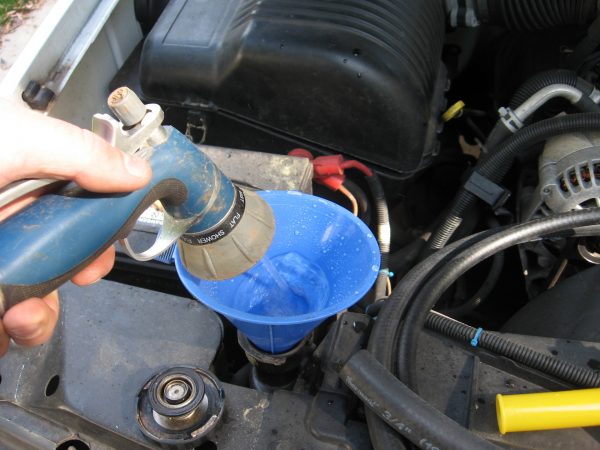
How to drain antifreeze: top effective ways
Content
As the car is used, owners sometimes have to deal with the need to drain antifreeze from the cooling system. Although the procedure is not complicated, but for its correct and, most importantly, safe implementation, it is required to observe some nuances. Thus, the liquid can be completely drained from the system and avoid possible injuries and breakdowns of car parts.
Why you need to drain the coolant
The cooling system of modern cars uses antifreeze as a heat-removing fluid. At first glance, it may seem that this liquid does not need to be replaced, because the system is closed and nothing enters it from the outside. The main components in antifreeze are ethylene glycol and water, but no less important are additives that prevent corrosion of the elements of the cooling system, lubricate and protect them. As the car is used, the additives lose their properties, which leads to the formation of corrosion, followed by a violation of the performance of parts. As a result, particles of metal and other materials settle and clog the radiator and other components of the system. This leads to a deterioration in the cooling of the motor and, as a result, its overheating.
When to change antifreeze
Antifreeze must be replaced in several cases:
- Loss of coolant performance. This happens due to constant temperature changes, evaporation, oxidation.
- Adding water or other liquid to antifreeze in case of emergency. There are situations when, due to the boiling of antifreeze or other reasons, topping up the liquid is required, but it simply is not at hand. Therefore, plain water or a different grade or brand of antifreeze is often used. After such manipulations, antifreeze needs to be completely replaced.
 When adding water or antifreeze of another brand to antifreeze in emergency cases, it is recommended to replace the coolant
When adding water or antifreeze of another brand to antifreeze in emergency cases, it is recommended to replace the coolant - Carrying out repairs. If repairs were carried out on the cooling system or engine, which required draining the coolant, it is advisable to use new antifreeze to refill the system.
Antifreeze resource
Antifreeze, like any other technical fluid, has a certain resource, which is indicated by the manufacturer or automaker. Basically, antifreeze is changed every 2-3 years. If we talk about modern cars, then the coolant is changed during its operation for more than 5 years or a mileage of 250 thousand km, which is typical for Volkswagen cars. AvtoVAZ stipulates a replacement after 75 thousand km. or 3 years of operation of antifreeze.
Signs of coolant replacement
The following signs indicate the need to replace antifreeze:
- the liquid loses its original color and becomes brownish. This indicates the occurrence of corrosion of the system parts. Such antifreeze needs immediate replacement, regardless of its service life;
 If the original color is lost, the antifreeze must be replaced
If the original color is lost, the antifreeze must be replaced - a jelly-like coating appears on the inside of the neck of the expansion tank. When the temperature drops to -10–15 ° C, a precipitate appears in the tank, cloudiness, the radiator electric fan starts to work more often.
How to prepare a car for draining coolant
To drain the antifreeze, you need to perform some preparatory measures. Since the substance in question is toxic, it cannot be dumped on the ground. For these purposes, a resealable container is used, which is disposed of in accordance with environmental standards. Preparation of the car consists in placing it on a flat horizontal surface for more efficient draining of fluid from all pipes and assemblies. On almost all cars, the coolant is drained through a special hole, which is sometimes located at the bottom of the radiator or on the pipes.
In the absence of a hole, draining is carried out through the removed radiator pipe.
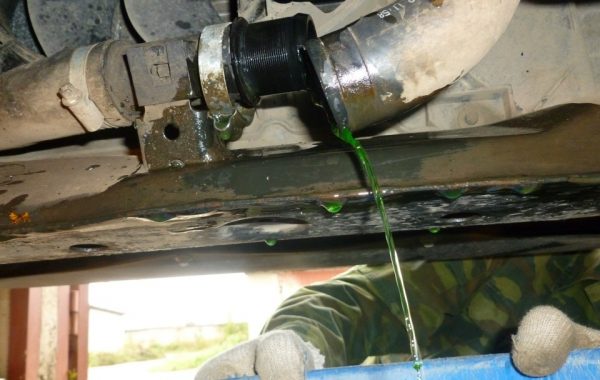
An important point is the observance of safety precautions: it is strictly forbidden to drain antifreeze from a hot engine. Due to the high heating temperature of antifreeze, there is a high probability of burns during operation. In addition, as a result of heating, the liquid in the system is under pressure and when any cover is opened, it will be released. Therefore, first you need to wait for the engine to cool down to ambient temperature and only after that unscrew the cap of the expansion tank and radiator.
How to drain antifreeze
Draining the coolant from the system can be divided into several stages, each of which has its own characteristics.
Through the radiator
After preparing everything you need, perform the following steps:
- We remove the motor protection by unscrewing the corresponding fasteners.
 Unscrew the fasteners, remove the engine protection
Unscrew the fasteners, remove the engine protection - We set the air conditioner knob to the maximum or open the stove tap (depending on the equipment of the car).
 To drain the antifreeze, fully open the tap of the stove
To drain the antifreeze, fully open the tap of the stove - We open the cover of the expansion tank.
 Opening the cap of the expansion tank
Opening the cap of the expansion tank - We substitute the container under the radiator.
- We find the drain plug and slowly unscrew it.
 Find the drain plug on the radiator and unscrew it
Find the drain plug on the radiator and unscrew it - Drain the liquid for 10 minutes.
 Drain the antifreeze for 10 minutes into a suitable container
Drain the antifreeze for 10 minutes into a suitable container
Video: draining antifreeze from the radiator
From engine block
Since draining the antifreeze from the engine block is a continuation of the procedure in question, we move the container under the drain hole on the engine and perform the following steps:
- We remove the elements that prevent free access to the drain plug. Depending on the brand of the car, these elements may be different.
- Carefully unscrew the plug.

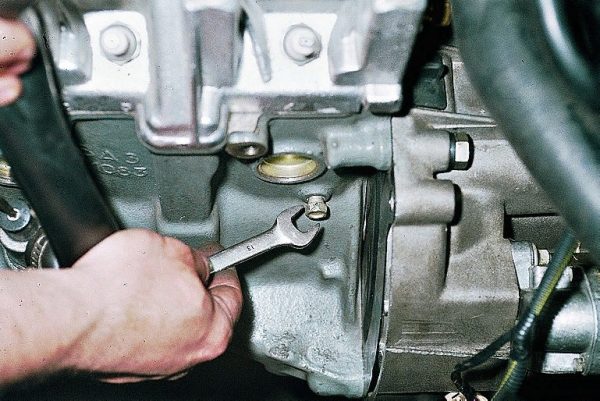 Unscrew the drain plug on the engine block
Unscrew the drain plug on the engine block - Drain the liquid until it stops dripping.

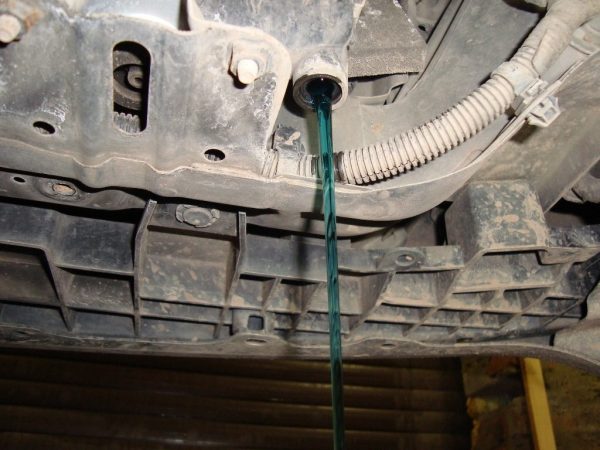 Drain the antifreeze from the motor block until it stops dripping.
Drain the antifreeze from the motor block until it stops dripping. - We wipe the cork.
- Check the seals and change them if necessary.
From the expansion tank
In the expansion tank, sediment accumulates over time. Therefore, when replacing the coolant, it will be quite useful to drain the substance from this container and rinse it. The essence of the procedure is to disconnect the pipe going to the radiator, followed by draining the liquid into a suitable container.


Another option is also possible: the coolant can be drained through the neck using a thin tube, for example, a medical dropper.
Video: how to drain antifreeze from the expansion tank


Watch this video on YouTube
Using jacks
The actions when using jacks largely repeat the standard procedure for draining antifreeze. After installing the container and unscrewing the plugs, the rear wheels are raised as high as possible. After 20 minutes, the car is lowered and only the left wheel is raised. After the same period of time, the car is lowered and the right wheel is raised. After such actions, a certain amount of liquid will pour out of the system each time.
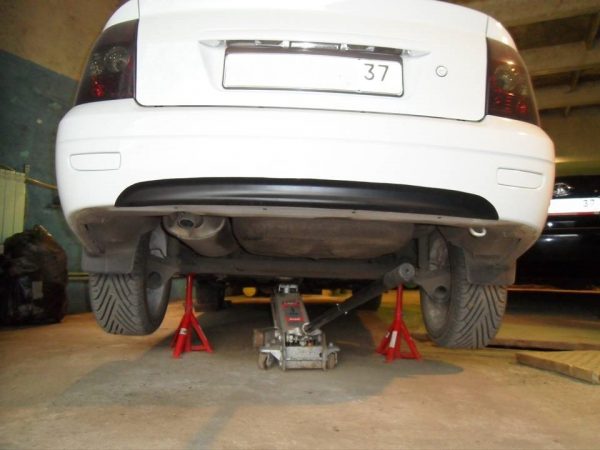

A similar procedure can be resorted to when repairing in the field, putting the car on a slope.
Compressor
The air compressor can also be used when draining antifreeze. It is connected to the cooling system and air is supplied, gradually removing the coolant. Although this option can be considered, but only as a last resort, because, depending on the power of the device, too high pressure can be created in the system, which will damage the plastic elements. In addition, not every motorist will have a compressor of the required performance at hand.
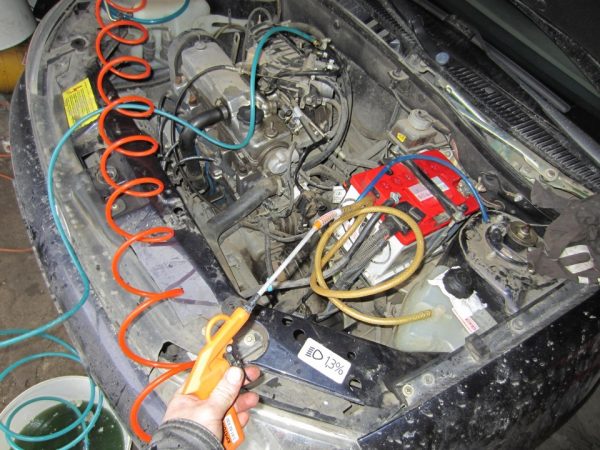

Video: draining antifreeze with a compressor


Watch this video on YouTube
Antifreeze must be replaced after a certain period of operation or mileage, as well as according to characteristic features. It is not recommended to drive on a coolant that has lost its properties, since the wear of the elements and components of the cooling system increases. After reviewing the step-by-step procedure, almost every motorist will be able to drain the antifreeze.


